Digging For Dinner on the Australian Alps Walking Track
Words & Photos by Mark Oates
My 5400 Porter accompanies me on many of my workdays and forays into the outdoors. My job is that of an outdoor education teacher, and it involves educating young people about themselves, the natural world, and working as a community. Trips can range from a half-day, right through to two-week expeditions. Our educational adventures vary from hiking (referred to as ‘bushwalking’ in Australia) to packrafting to sea kayaking to snow camping. There’s even the occasional climbing trip.
Given the responsibility of looking after children and teenagers in remote locations, I often have to carry a multitude of additional ‘risk management’ items that simply don’t fit into traditional, much smaller, ultralight packs. Carrying extra communications gear, large group stoves, group tarps, emergency shelters, a mega expedition sized first-aid kit, and occasionally a range of camera and video gear takes up a large amount of space and adds significant weight. This is where having personal equipment that is super compact and ultralight is imperative, and where the Porter shines.
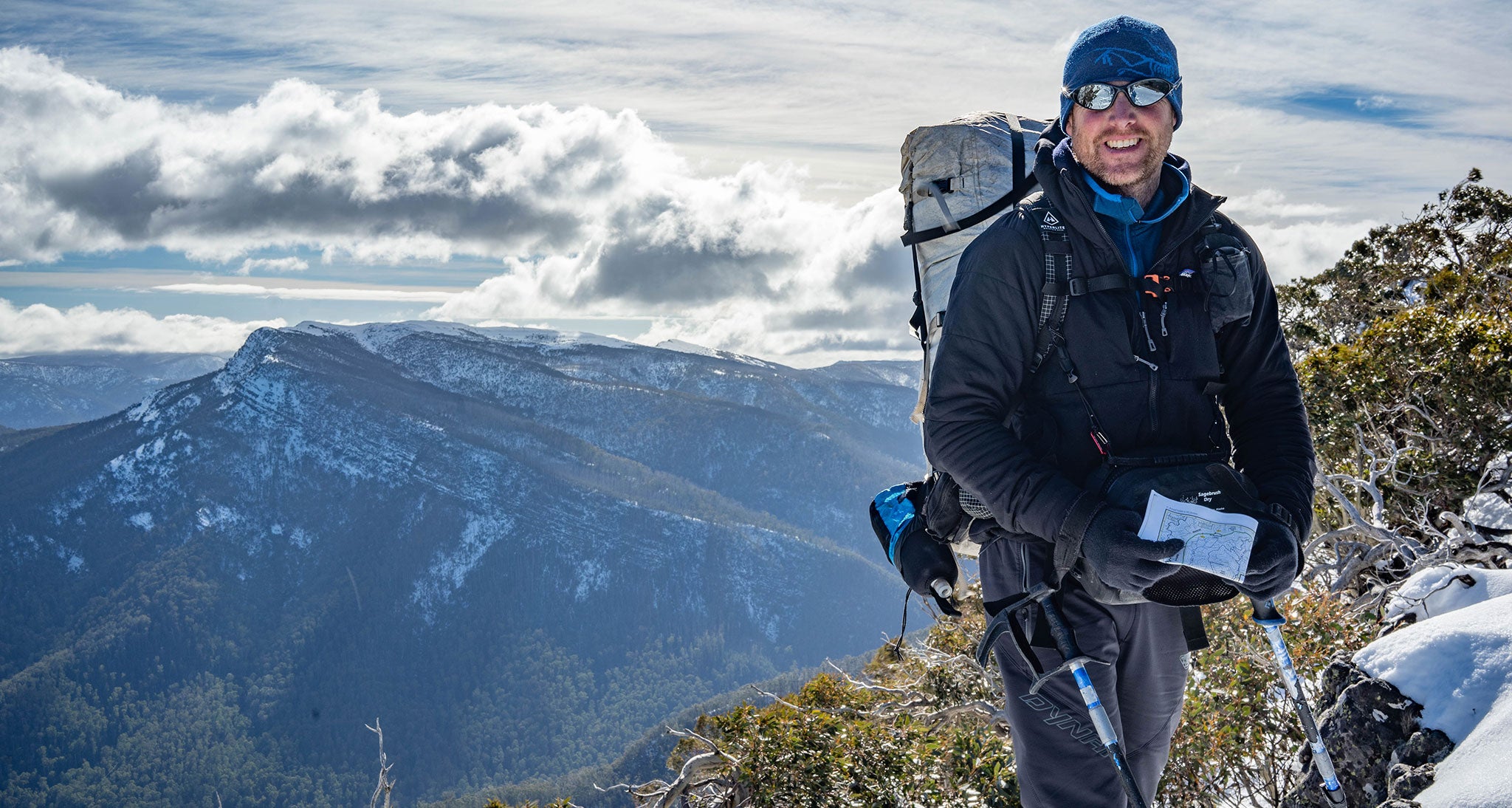
Now Australia is not known for its snow nor its ski-touring possibilities. The ‘Land Downunder’ is the driest inhabited continent in the world and probably best known for its arid desert ‘outback’ environments such as those around Ayers Rock or its white sandy beaches of Far North Queensland. So, many overseas visitors are amazed to hear that Australia gets enough snow to ski, let alone that it offers the opportunity for multi-day ski-touring.

My passion for snow camping and ski-touring is something that I share with my twin brother Andy, and so, whenever we get the chance, we try to get out on an adventure together. Last Winter, we each somehow managed to align work and family commitments to create a six-week window across what we hoped would be the best time for a decent snowpack. Our goal was to complete a 655 kilometre (400+ miles) traverse of what is, grandly, called the ‘Australian Alps Walking Track’ (AAWT). Although the term ‘alps’ is a stretch, the AAWT follows and crosses much of the highest mountains in Australia.
As an outdoor professional, I am lucky enough to have access to a wide range of packs and tents. For this trip, both Andy and I saw our minimalistic 5400 Porter packs as being the ideal piece of kit. With their size, we could comfortably fit our AT ski boots inside our pack for the sections we would be walking below the snowline. Having a large but lightweight pack also allowed us to be able to quickly and easily throw all of our snow camping gear into pods and then into our packs enabling quick starts early in the morning.
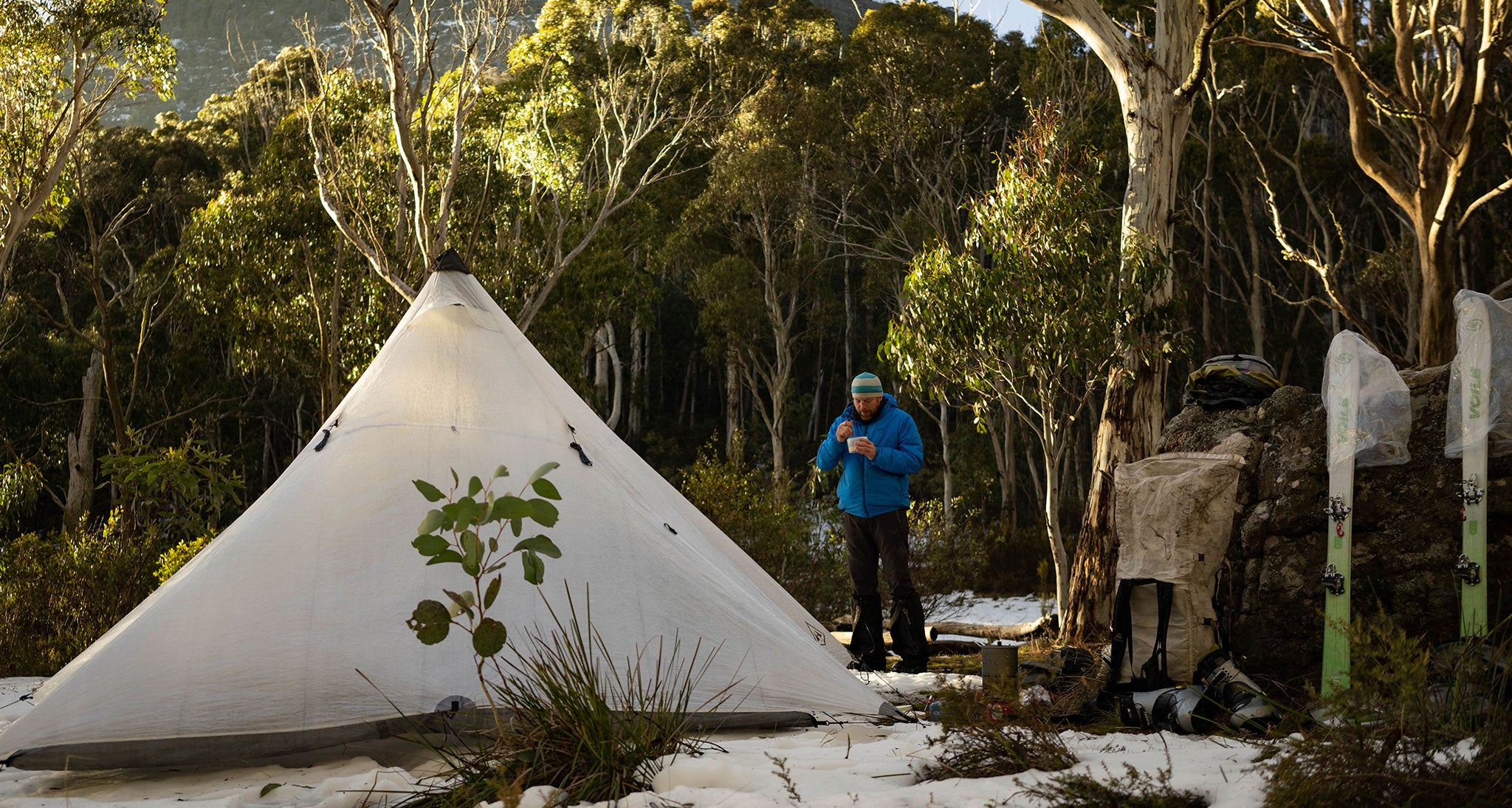
The track starts in the historic gold-mining town of Walhalla, a couple of hours outside of Melbourne, and from there, it ascends 1000 metres to the tree-lined Baw Baw Plateau. Although parts of the AAWT are above the tree line, much of the ‘route’ traverses forested areas. In Winter, this creates for challenging conditions as after a decent dump of snow, many of the large bushes and small trees that line the track get weighed down by the snow and block the track. Andy and I spent a lot of time pushing through, crawling under, and clambering over a heavily snow-covered tangle of branches and fallen limbs. The robust Porters shone in this environment, keeping all our gear safe and dry.
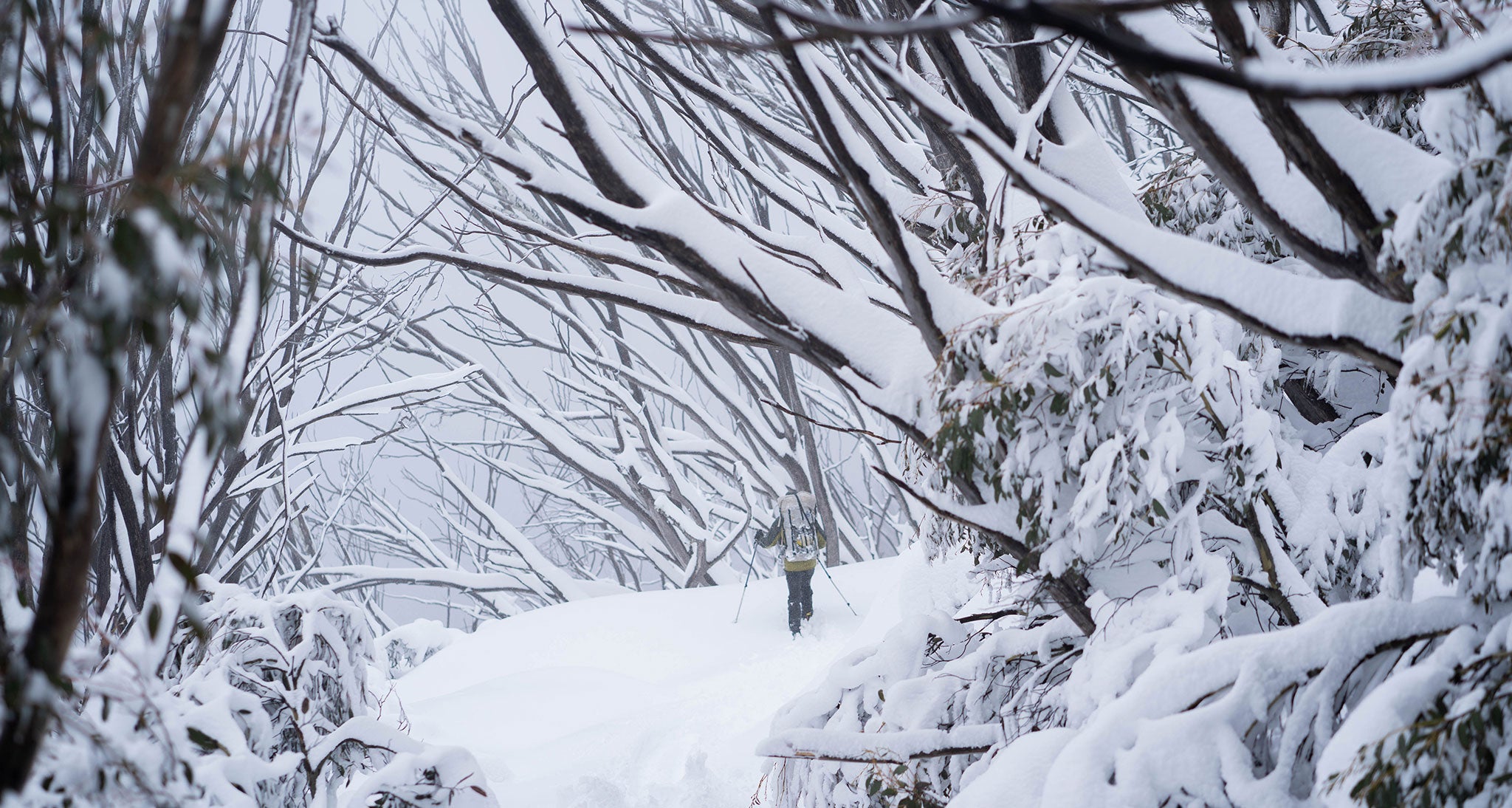
Due to numerous dumps of snow, less than ideal weather conditions, and the initial low altitude of the AAWT, it was a tough first two weeks. Day Five saw us tentatively crossing the Black River on the slipperiest log I have ever set foot on. Our instep crampons were stashed another week away in one of our six pre-cached food and gear drops; otherwise, we would have put them on for this crossing. Fortunately, we both made it across without falling the two-metres into the brown chest-deep river below. The next day we were tested when for several hours, we could not find our first food cache. Pre-Winter Andy had hidden the cache in the dark with his kids during a mad drive to get our food caches stashed before the roads closed, and the snow fell. It was only 60 metres from a track intersection, and he had some obvious trees, some tape to mark it, and his phone to GPS the location. With five feet of snow on top, though, it looked completely different, and we had to move cubic metres of snow for a couple of hours trying to find it. Probing wasn’t giving us anything except lots of false readings when we hit wood instead of the metal box in which the food was cached.
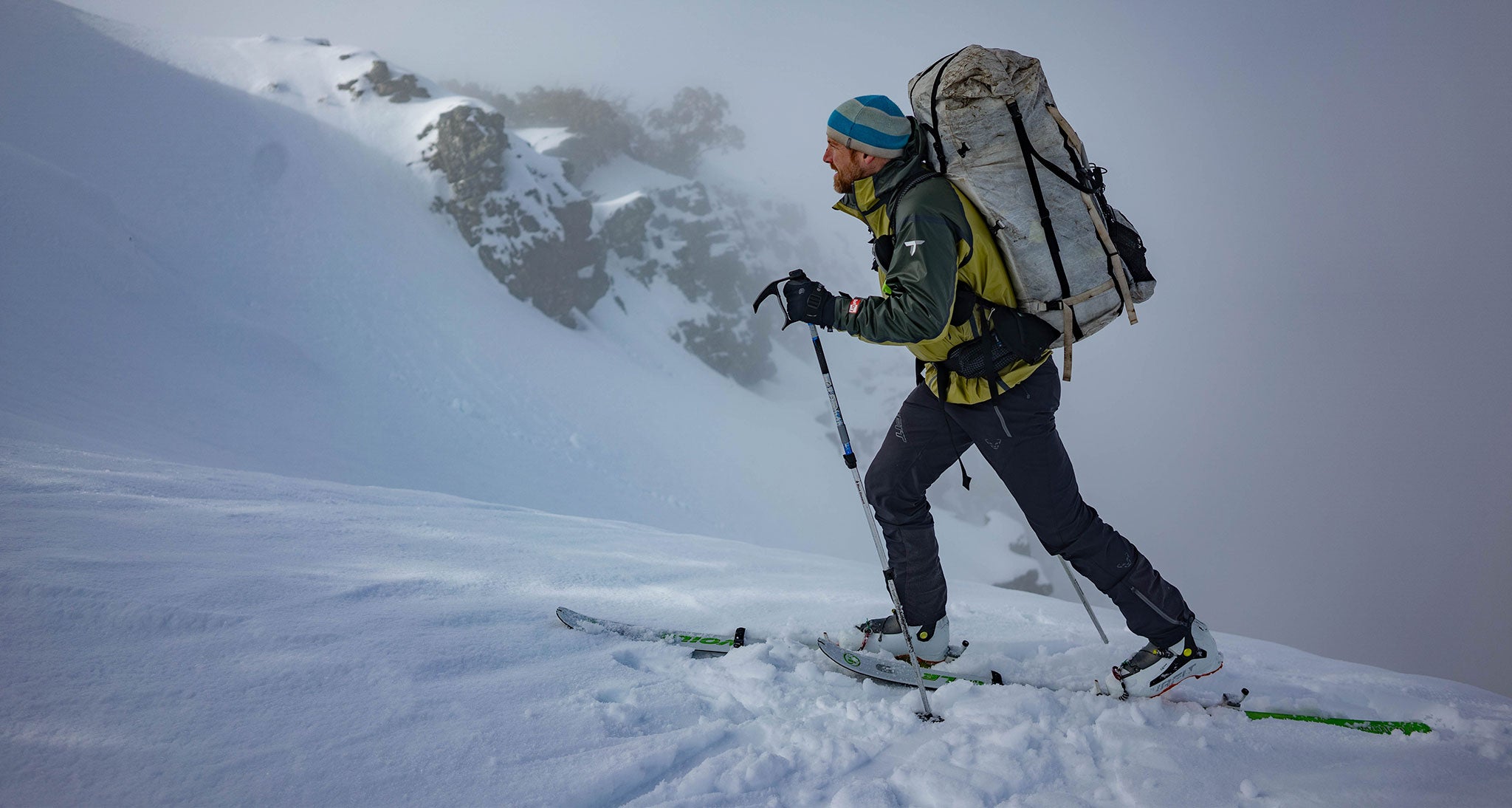
Not finding this cache meant either an extra four-days to get out to a road head, somehow get to a town and purchase more food, and then return back to this point. The other alternative was to continue for another three to four days with almost no food to our next cache, which was in the most remote part of the whole expedition. This tempted us, although we knew it would be foolhardy and highly risky, given how hard the days were and how much energy our bodies were consuming. With our last bit of fuel used up that morning in anticipation of getting lots more fuel at this cache, it was a no brainer that we could not go on. It was right after making this decision and having one last look that we somehow managed to stumble on the marking tape that Andy had left at head height. It was about 10 cm above the snow. It was a huge relief when we finally excavated as much snow as the size of a tent and touched the metal box with our food in it.

A few days later saw us above the tree line, navigating in the dark across Mt. Howitt in almost blizzard conditions. It was only a couple of kilometres to the safety of Vallejo-Gantner refuge hut, but movement required intense navigation with a compass, map, and GPS. Initially, we had to trudge on foot through knee to thigh deep snow as conditions were too challenging to ski but, eventually, we were able to clip back in and make our way on skis.

We were camping on the edge of the tree line on Quartz Ridge a few kilometres from the summit of Victoria’s highest peak, Mt. Bogong. Finally, we woke to a clear sky and some fantastic views, something we had received little of in the three weeks prior.
Halfway through the trip, we received some sad news of a family tragedy. This meant we would come off the track for four days to attend a funeral before returning to it. Our six-week timeline was tight without this, but the loss of four days put our ability to complete it in the time we had available at serious risk. So, we pushed forward even harder with some days involving us moving for 13 hours.
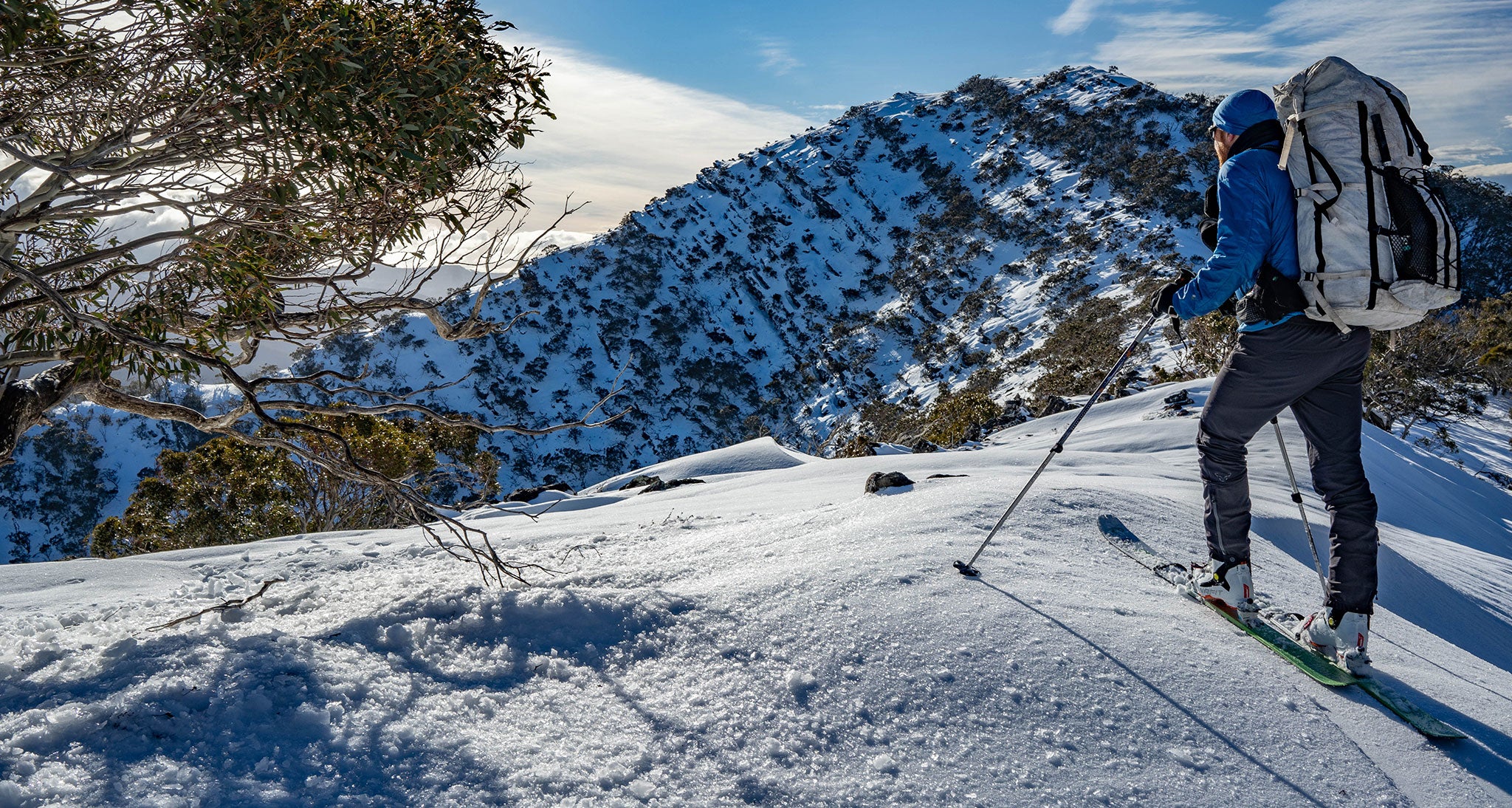
A huge highlight was the great weather we experienced as we crossed Australia’s highest peak, Mt. Kosciuszko, and the surrounding ‘Main Range.’ At a measly height of only 2228 metres, it is not impressive by world standards, but it is still a beautiful alpine environment and offers some fantastic ski touring.
Swollen rivers were our last real challenge with waist-deep crossings somewhat chilly. We also had to take an alternative longer route and walk in the dark for several hours to bypass the chest-deep very fast flowing water of the Murrumbidgee River.

We finally walked into the ranger’s station at Tharwa, on the outskirts of Canberra, after 35 days of skiing and walking. With half our time on skis, it was an awesome experience to complete with my brother. Although very challenging at times, it is a trip that I treasure forever and one that my Hyperlite Porter Pack will remind me of every time I pick it up for another outdoor adventure.
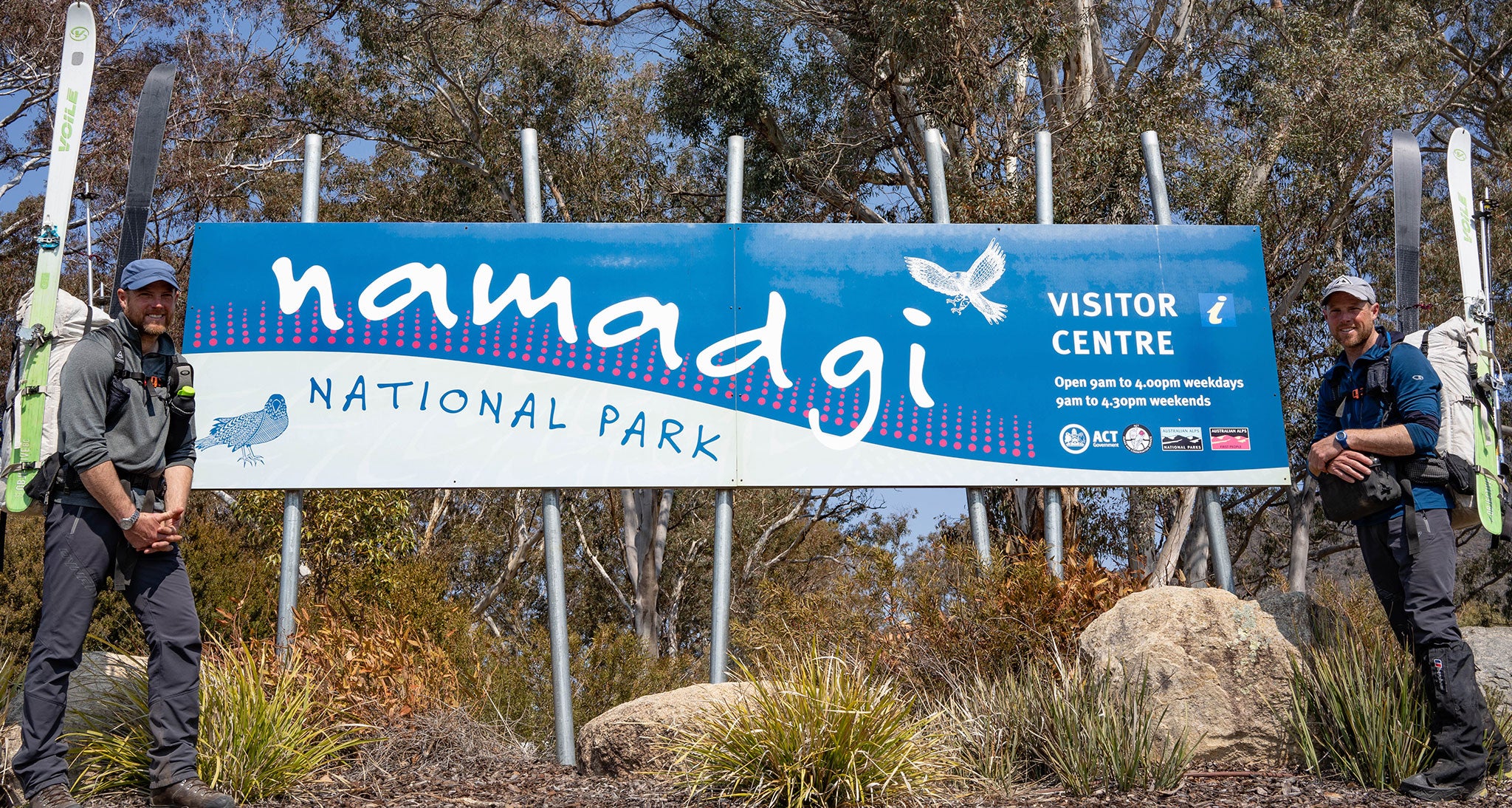
Hyperlite Mountain Gear Ambassador Mark Oates is a passionate outdoor educator that strives to inspire teenagers to explore outdoors with a real sense of adventure. A qualified whitewater kayak instructor, top rope and abseil/rappel instructor, and sea kayak instructor, he regularly takes students on challenging two-week educational adventures in the wilds of Tasmania. To inspire others to undertake their own lightweight outdoor experiences, Oates regularly films his and his wife Jen’s adventures. For the complete report from this trip, check out Mark's story on Exposure.co, or our previous post: Traversing the Australian Alps Walking Track in Winter With the Oates